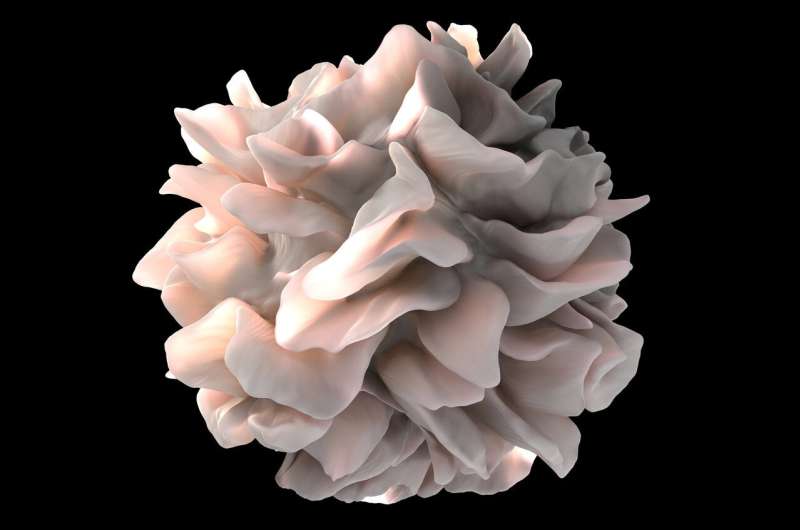January 15, 2020 report
Evidence of previously unknown electrical property in human cortical dendrites

A team of researchers from Humboldt-Universität zu Berlin, Universitätsmedizin Berlin and the Foundation for Research and Technology-Hellas (IMBB-FORTH) has found evidence of previously unknown electrical properties in human cortical dendrites. In their paper published in the journal Science, the group describes their study of human cortical dendrites and what they found.
For many years, neurons were thought to be little more than logic gates, each simply responding to electrical spikes with AND or OR responses. Similarly, our complex thought processes were believed to be the result of networks of neurons working together—connected to one another by outgoing "wires" called axons and incoming "wires" called dendrites. More recently, neuroscientists have come to suspect that the human brain may be more complex than has been depicted by this simple model. In this new effort, the researchers have found evidence of cortical dendrites doing more than simply passing along electrical signals.
The work involved studying brain tissue taken from living patients with brain tumors or epilepsy. The group focused their attention on cortical layer 2/3, which is typically dense with neurons. They used pipettes to inject ions into dendrites to observe the behavior of charged particles as they flowed toward the neuron body. As expected, each spike was short-lived—approximately 1 millisecond.
But the dendrites also behaved in unexpected ways. In rodent studies, calcium tends to trigger longer dendrite spikes and sodium triggers shorter spikes. In human dendrites, adding sodium triggered longer spikes. The researchers also found that when they prevented sodium from entering the dendrites, they continued to fire—and in some cases, began firing in rapid succession. When they blocked calcium, spiking ceased.
The evidence suggests that human dendrites in the cortex are different from those in rodents. To learn more about how they behave, the researchers built a neural computer model based on what they had found. To their surprise, simulations showed the dendrites processing electrical signals—something that has never been seen before. The dendrites were performing complex tasks (such as XOR operations) that, up until now, were thought to require networks of neurons.
More information: Albert Gidon et al. Dendritic action potentials and computation in human layer 2/3 cortical neurons, Science (2020). DOI: 10.1126/science.aax6239
© 2020 Science X Network





















